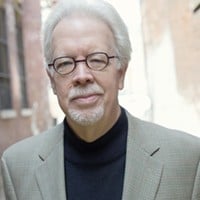Critic's Pick
“There’s a lot of different ways to tell his story. Here’s how I tell it.” I felt like a kid again, sitting around a campfire with someone spinning scary stories, one on top of the other.
That’s what Harold is all about, the third iteration of excellent Fringe shows from Four Humors Theater. (Previous productions from this Twin Cities company were Mortem Capiendum in 2008 and April Fools a year ago. Director Jason Ballweber also came to Cincinnati during the 2009 holiday season to stage Sideways Stories from Wayside School for Cincy Fringe organizer Know Theatre, a work that Four Humors created.)
The show opens in total darkness with Ballweber and a flashlight; he tells a short tale about a pair of farmers who create a scarecrow they name Harold. They treat him shabbily, and he comes to life to wreak revenge. That version of the story took maybe two minutes, but it’s just a prelude to an evolving, episodic rendition of the story that plays out over an hour.
The brothers in this version are located out in some wilderness, keeping an eye on a herd of goats through the summer months with limited supplies. Think Brokeback Mountain. Tom (Matt Spring) and Albert (Brant Miller) are brothers, not lovers, but their jocular sparring and raucous arguments are familiar and expectable for two guys without much to do.
Albert, who’s older, has been telling ghost stories to his kid brother for a long time, to the point that Tom, now about to go off to college, can cut the stories off before he reaches every scary punch line. Also “witnessing” the storytelling is the scarecrow Harold (inhabited by Ballweber), whom the brothers jokingly blame for things, make up funny voiced remarks for and find various ways to abuse.
I won’t spoil the fun by saying more about the show’s final minutes, but they're just what a good ghost story should provide: startling, even if you’ve already been told what’s coming. The show is presented at Duveneck 2, a temporary Fringe venue that’s probably going to become a store or a restaurant (on Vine Street, next door to Senate, a popular new restaurant).
On an steamy Saturday evening around 10 p.m., when I saw Harold, the atmosphere — sans air conditioning — was claustrophobically intense. (The audience filled every last chair, and a few more were found.) Most of the lighting is done with a flashlight, although an erratic generator keeps the brothers (and us) on edge with a single-bulb electric lamp that blinks on and off at inopportune moments. There’s also a record player with one LP, mournful Country & Western ballads by Merle Haggard.
The show works especially well because it’s episodic. A scene is played and then goes to a complete blackout. We hear shuffling of feet and mumbling in the dark, plus frequent snoring, so we know that nights (and time) have passed — although we never see daylight. There are comic moments that make tense scenes all the more gripping.
The work is beautifully paced and ends at just the right moment, almost 60 minutes on the nose. There might be a lot of different ways to tell Harold’s story, but you need to see this one.
(Get upcoming performance dates and venue details here.)






